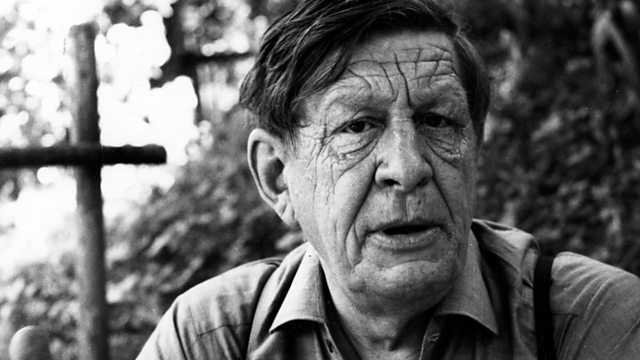

Bernstein’s answer to “The Dirge” comes in the form of the upbeat “Masque.” He takes the 12-tone row and transforms it into hip, grooving, bebop jazz (1). When in doubt, Bernstein always opted for a party. However, this grave moment does not last for long. The second half of the piece opens with “The Dirge,” a 12-tone theme, first introduced by the solo piano. “The Seven Stages” are constantly in transit and seem to lack a central narrative. When the work proceeds into “The Seven Stages,” stylistic changes abound. The piano, which acts as the voice of the four main characters is introduced in an unaccompanied solo at the beginning of the section entitled “The Seven Ages.” As more instruments are introduced in conjunction with the piano, the tone becomes more dissonant and at times frantic – reflecting the “anxiety” felt by the protagonists.

A twelve-tone row, played by a single flute, serves as the audience’s introduction into the surreal.
W.H AUDEN AGE OF ANXIETY SERIES
In the next section of the symphony, Bernstein incorporates serialism – a compositional technique in which a fixed series of notes, especially the twelve notes of the chromatic scale, are used to generate the harmonic and melodic motifs. The pure sounds of the two clarinets overlap one another while moving between consonance and dissonance. The symphony begins with a solemn clarinet duet. Still, Bernstein’s unique style of composition can be heard clearly. Instead of a typical four-movement, work, Bernstein wrote his symphony for solo piano and orchestra, dividing the piece into six sections – mirroring Auden’s text. The London Symphony Orchestra is playing under Bernstein’s direction.īernstein’s second symphony is quite different from most symphonies. In a New York Times Op-ed by Daniel Smith, the poem is described as being “a difficult work - allusive, allegorical, at times surreal” (3).īelow is a recording of Bernstein’s second symphony. The poem itself is described as a Baroque Eclogue, an ornate tribute to the bucolic, and is written in alliterative verse. The material is definitely unwieldy and has been called nebulous by some. Each one of the four protagonists represent one of Carl Jung’s archetypes – Thought, Feeling, Sensation and Intuition (2). Auden was able to draw upon modern science to enhance his work as well.

Into The Age of Anxiety, Auden incorporated elements of popular culture, current events, and common vernacular. Created soon after WWII in the age of McCarthyism, Auden’s poem grapples with themes of human isolation and faith. With this in mind, I set out to answer the following question – does Bernstein’s “The Age of Anxiety” deserve to be called one of the great symphonies of the 20th century?īernstein’s second symphony, was heavily inspired by W.H. Some critics have lambasted the improvisatory nature of the work, while others ardently praise its incorporation of jazz elements. Auden’s written work, and despite being based upon a narrative, Bernstein’s symphony seems to be lack one. Critics debate endlessly concerning the symphony’s connection to W.H. Although none of Bernstein’s symphonies could be considered at all orthodox, his second in particular seems to be a work in contradictions. Out of Bernstein’s three symphonic works, his second symphony, entitled “The Age of Anxiety,” is most perplexing to me. I have a deep suspicion that every work I write, for whatever medium, is really theater music in some way" (1) - Leonard Bernstein "If the charge of 'theatricality' in a symphonic work is a valid one, I am willing to plead guilty.


 0 kommentar(er)
0 kommentar(er)
